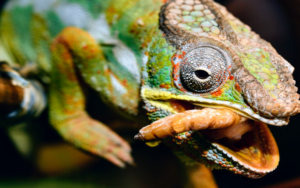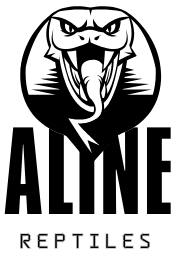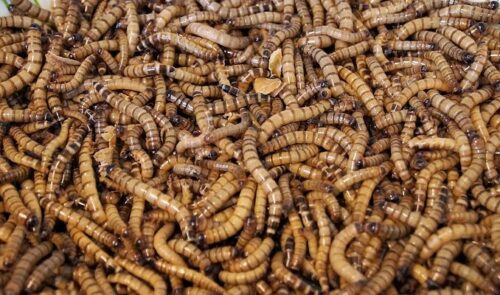If you’re a proud chameleon owner or you’re considering getting one, you’ve probably heard a lot about their unique and often confusing dietary needs. Chameleons are known for their colorful, vibrant personalities and their specific diet requirements that can vary by species, age, and environment. As you dive deeper into understanding what to feed your pet, you may find yourself wondering, “Can chameleons eat mealworms?”
Mealworms are a commonly available insect often considered a good protein source for many reptiles. But are they safe and healthy for your chameleon? While mealworms can be part of your chameleon’s diet, there are several important things to consider before feeding them to your pet.
In this article, we’ll explore whether mealworms are a good choice for your chameleon, the risks involved, how to feed them safely, and the best alternatives to ensure your chameleon remains happy and healthy.
Understanding Chameleons’ Diet Needs

Before we answer whether chameleons can eat mealworms, it’s important to first understand what makes up a chameleon’s ideal diet. Chameleons, native to various regions across Africa, Madagascar, and Asia, are insectivores with the ability to consume a wide variety of small insects, fruits, and plants.
Their wild diet typically includes crickets, locusts, roaches, and certain plant material, depending on their species and natural environment.
Why Diet Matters for Chameleons
Chameleons are more than just colorful creatures; they rely heavily on a balanced diet to thrive. Proper nutrition helps them maintain healthy skin, good shedding, vibrant colors, and overall vitality. A poor diet, on the other hand, can lead to a variety of health problems such as digestive issues, obesity, and calcium deficiency.
With this in mind, it’s crucial to ensure that the food you provide meets your chameleon’s nutritional needs. A variety of live insects, such as crickets, dubia roaches, and mealworms, should make up the bulk of their diet. However, not all insects are created equal, and understanding which are best suited for your chameleon is key to their long-term health.
Can Chameleons Eat Mealworms?
Now that we have a general idea of a chameleon’s dietary needs, let’s address the main question: Can chameleons eat mealworms?
Nutritional Value of Mealworms
Mealworms (the larvae of darkling beetles) are rich in protein and fat, making them a tempting snack for many reptiles. For chameleons, protein is essential for growth, energy, and muscle development, while fats help with energy storage and overall vitality. However, while mealworms provide protein, they are high in fat compared to other insects typically fed to chameleons, such as crickets and roaches.
Pros of Mealworms:
- Protein Source: Mealworms provide a good source of protein, which is essential for a chameleon’s growth and energy needs.
- Easy to Find: Mealworms are easy to find in pet stores and online, making them a convenient food source for chameleon owners.
Cons of Mealworms:
- High in Fat: Mealworms are much higher in fat than insects like crickets, which can contribute to obesity if fed too frequently.
- Tough Exoskeleton: Mealworms have a hard exoskeleton that can be difficult for chameleons to digest. This can lead to digestive issues, especially in younger or smaller chameleons.
- Choking Hazard: Due to their tough outer shell, mealworms can pose a choking risk if not properly prepared or if the chameleon is particularly small or young.
Mealworms as a Suitable Food Option
While mealworms are not the most ideal food option for chameleons, they can still be fed in moderation, particularly to adult chameleons who are capable of handling the harder exoskeleton. However, younger chameleons or smaller species may struggle with the tough shell and could experience digestive issues.
In small amounts, mealworms can be an occasional treat. However, it’s essential to balance them with other insects that are lower in fat and easier to digest.
The Risks of Feeding Mealworms to Chameleons

Even though mealworms can offer some nutritional benefits, there are several risks to consider when incorporating them into your chameleon’s diet. Let’s take a closer look at the dangers.
1. Choking Hazard
One of the most immediate concerns with mealworms is the risk of choking. Mealworms have a hard, tough exoskeleton that can get stuck in a chameleon’s throat, especially if they try to swallow them whole. This risk is heightened if your chameleon is a juvenile or a smaller species with a smaller throat.
2. High Fat Content
Mealworms are relatively high in fat compared to other insects. Feeding too many high-fat insects can lead to obesity in your chameleon, which in turn can cause a host of health issues such as liver problems, heart disease, and shorter life expectancy. Overfeeding mealworms can also lead to fatty liver disease, a condition that chameleons are particularly prone to.
3. Potential for Digestive Problems
Chameleons, like many reptiles, rely on their digestive systems being able to break down their food properly. The tough exoskeleton of mealworms can be difficult for chameleons to digest, potentially leading to constipation or even impaction, where food becomes stuck in the digestive tract. This can be a serious condition that requires veterinary care.
4. Risk of Impacting Gut Health
If mealworms are not properly sourced, they could carry parasites, pesticides, or other chemicals that might harm your chameleon. If you are not gut-loading your mealworms (feeding them nutritious foods before offering them to your chameleon), your chameleon may miss out on essential nutrients, leaving them vulnerable to illness.
How to Safely Feed Mealworms to Chameleons
If you do choose to feed your chameleon mealworms, it’s important to do so in a safe and controlled manner. Here’s how to minimize the risks and make the experience as safe as possible for your pet.
Proper Mealworm Preparation
Before feeding mealworms to your chameleon, you must ensure they are gut-loaded. This means feeding them nutritious food (such as vegetables, fruits, and grains) for at least 24 hours before offering them to your chameleon. This ensures that the mealworms provide essential vitamins and minerals, such as calcium, that your chameleon needs to stay healthy.
Additionally, you should feed only small mealworms to young or small chameleons and avoid larger mealworms, which may be harder to digest.
Feeding Frequency
Mealworms should be fed sparingly and only as a supplement to other, more nutritionally balanced insects. Limit mealworms to once or twice a week, and ensure your chameleon is primarily consuming crickets, dubia roaches, or other lower-fat insects.
Supervision During Feeding
Always monitor your chameleon while they are eating, particularly when feeding mealworms. If they struggle with swallowing them or seem to have difficulty eating, remove the mealworms and try feeding them a more suitable insect.
Alternatives to Mealworms for Chameleons
While mealworms can be part of your chameleon’s diet, they are far from the only option. In fact, there are several alternatives that may be better for your pet’s health.
1. Crickets
Crickets are a much better choice for chameleons as they are lower in fat and easier to digest. They are a good source of protein and can be gut-loaded to provide additional nutrients. Crickets also tend to move around more, which helps stimulate your chameleon’s hunting instincts.
2. Dubia Roaches
Dubia roaches are another excellent option. They are high in protein, low in fat, and easy for chameleons to digest. Like crickets, they can be gut-loaded with nutritious foods to boost their nutritional value.
3. Superworms
Superworms are another great option. They are larger than mealworms but provide a more balanced nutritional profile with a lower fat content.
4. Waxworms (Occasional Treat)
Waxworms are high in fat, so they should be fed sparingly as a treat. They are a good source of protein but should not be used as a staple insect due to their high-fat content.
When to Seek Professional Advice
If you notice that your chameleon is displaying symptoms of a poor diet, such as lethargy, poor shedding, weight loss, or digestive problems, it may be time to consult a reptile-savvy veterinarian. A vet can help you assess your chameleon’s diet and provide advice on how to correct any imbalances.
Conclusion
Can Chameleons Eat Mealworms? Feeding your chameleon is not just about providing food—it’s about providing the right food. While mealworms can be a part of a chameleon’s diet, they should be fed sparingly due to their high fat content and tough exoskeleton. In moderation, mealworms can offer some nutritional value, but they should not be a staple food.
To ensure your chameleon stays healthy and happy, focus on providing a varied diet of lower-fat insects, such as crickets and dubia roaches. Always gut-load your feeder insects, and monitor your chameleon’s health regularly. By following these guidelines, you’ll help your chameleon thrive for years to come!

